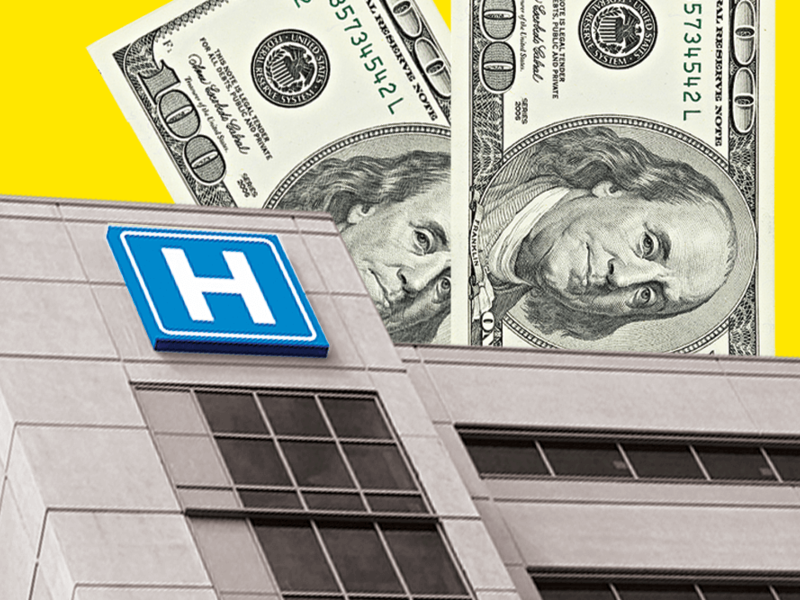 Modern Healthcare Illustration / Getty Images
Modern Healthcare Illustration / Getty Images
A new report finds hospital operating margins hovered around 4% in July, with those in regions with high rates of the Delta variant coming in lower.
Kaufman Hall’s National Hospital Flash Report shows the median hospital margin index was 4.1% in July including CARES Act stimulus funding distributed by the federal government, which the report noted is close to June levels. Without CARES Act funding, that was 3.2%.
“That is really only a slightly bit higher than where they’ve been in the past,” said Erik Swanson, an author of the report and a senior vice president of data and analytics with Kaufmann Hall, “and that number may ultimately be too low for long-term sustainability overall.”
Including CARES Act funding, the hospital operating margin index climbed 1% year-to-date in July compared with the same period in 2019. Without the government stimulus funds, however, the median margin was down 7% year-to-date from 2019, due in part to more expensive, high-acuity patients, not including COVID-19 patients.
Hospitals’ gross patient revenue climbed from the same periods in both 2019 and 2020 for a fifth consecutive month in July, the report noted. Gross operating revenue grew 8.3% year-to-date compared with 2019 and 16.4% year-to-date compared with 2020. Inpatient revenue was up 3.7% compared to January through July 2019 and 10.5% compared to the same period in 2020.
Hospitals in the South saw the biggest year-over-year drop in margins driven by high rates of the Delta variant, the report said. The Midwest had the second largest drop in margins as the Delta variant and patient confidence declined, Kaufman Hall noted.
Outpatient revenue, while also up from 2019 and 2020, was down almost 2% from June, which the report noted could reflect delayed care because of the COVID-19 Delta variant.
Meanwhile, total expense per discharge was effectively flat compared with the same period in 2020. Labor expense per adjusted discharge grew 12.5% year-to-date compared with 2019, but dropped 1.1% year-to-date below 2020.
Drug expense per adjusted discharge grew 22.2% year-to-date in July compared with the same period in 2019. That was the biggest area of expense increase last month, the report noted.
Swanson said there are three reasons for the higher drug expenses. Drug prices are higher, patients have more severe illnesses and need more expensive drugs and there’s been higher drug utilization.
Emergency room visits were down 13.1% year-to-date from the same period in 2019. Emergency volumes have been some of the slowest to return, and some predict they’ll never fully recover to pre-pandemic levels, as patients get more comfortable seeking care virtually or in a typical doctor’s office.
In a related report on physician groups, Kaufman Hall noted that the median physician compensation per full-time equivalent was $312,799 in the second quarter of 2021, up just 1% from 2019. Physician productivity, measured as physician work relative value units per full-time equivalent, rose 11.4% compared to the fourth quarter of 2019. Net revenue per physician full-time equivalent increase 11.6% from the fourth quarter of 2019. Expense per physician grew 11.7% in that time.
Hospitals’ bad debt and charity care comprise a far smaller share of their total budgets than in prior years, including 17% less than in 2019 year-to-date. Swanson said it may be that patients who are uninsured or underinsured may be delaying care more than those who are fully insured.
Kaufman Hall’s monthly reports cover more than 900 hospitals. They rely on data from Syntellis Performance Solutions.
Source link : https://www.modernhealthcare.com/providers/hospital-operating-margins-lower-high-delta-areas











